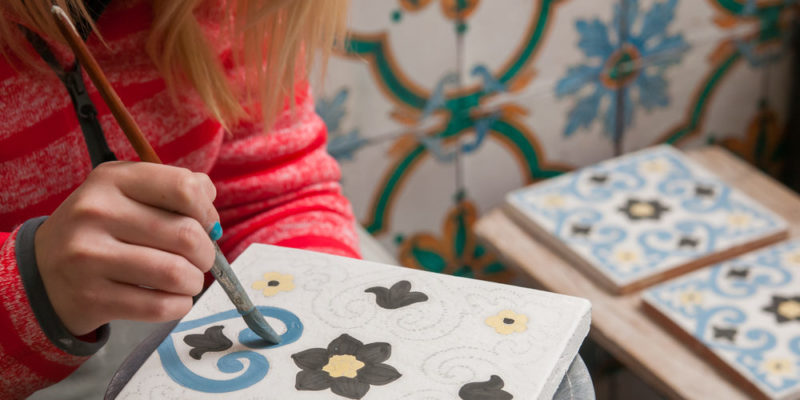We explain what ceramic is and the properties that this material presents. Also, what are its characteristics and various uses.
What is Ceramic?
Ceramic is a material that has been used for a long time for utilitarian and decorative purposes . It is obtained from different raw materials present in the form of powder or paste, which are kneaded or molded to give them the required shape and then are subjected to firing, with which they acquire rigidity. Finally the ceramic pieces can be painted with enamel.
In the elaboration of ceramic objects, inorganic solid materials are always used , such as silica, alumina, kaolin and metallic oxides, combined with other substances.
Ceramics are used in part for their outstanding physical and chemical properties . Among them we can mention its stability, which allows it to avoid oxidation. It resists corrosion and abrasion, it does not present elasticity, it is not combustible and it is refractory.
Ceramic Characteristics :
Not fuel
Unlike wood , it is a much safer material for construction .
-
It is not oxidizable
Resistant to corrosion and abrasion

It is not affected by chemicals, nor is it worn by polishing.
-
Brittle or glassy
Not elastic
Once set, the ceramic remains fixed, it is no longer possible to continue molding it.
-
Refractory
 Ceramics in general resist high temperatures (in fact it is obtained in ovens at temperatures exceeding 1000 °C), but this property can be optimized by including aluminum , beryllium and zirconium oxides in the mixture of clays . In this case, firing is carried out at 1300-1600 °C and cooling is very slow. In this way, products are achieved that can withstand temperatures of up to 3000 °C, necessary for quite specific uses.
Ceramics in general resist high temperatures (in fact it is obtained in ovens at temperatures exceeding 1000 °C), but this property can be optimized by including aluminum , beryllium and zirconium oxides in the mixture of clays . In this case, firing is carried out at 1300-1600 °C and cooling is very slow. In this way, products are achieved that can withstand temperatures of up to 3000 °C, necessary for quite specific uses.
Non-conductive of electricity
In addition to resistance to temperature, ceramics is characterized by its great power of electrical insulation .
-
Hardness
Different types of pottery

- Porous ceramic. Made with coarse-grained clay, they are rough and permeable to gases and fats; they absorb moisture. They are the ones that have not undergone the vitrification process, as they have not been exposed to temperatures high enough to melt the quartz with the sand. Its fracture (when it breaks) is earthy. Bricks and tiles are considered porous ceramics.
- Semi-compact ceramic. It has fine-grained clay, they are not very permeable and do not absorb moisture.
- Compact ceramic. They have a microcrystalline structure, are waterproof, soft and do not absorb moisture. Fine earthenware and porcelain are located there.
- tough ceramic. They support high efforts. They are the ones used in the manufacture of tiles or porcelain tiles, for example.
Important in human history
Ceramic objects are part of many cultures around the world and are significant when it comes to reconstructing the customs of a civilization that has already disappeared, as is the case with pre-Columbian civilizations.
Thanks to its durability, many objects made of ceramics and intended for daily activities (such as elements for cooking, for carrying water, etc.) or for use on special occasions, such as funerals, weddings, etc., have been collected in different archaeological surveys. ritual celebrations and others.
The above content published at Collaborative Research Group is for informational and educational purposes only and has been developed by referring reliable sources and recommendations from experts. We do not have any contact with official entities nor do we intend to replace the information that they emit.
Veronica is a culture reporter at Collaborative Research Group, where she writes about food, fitness, weird stuff on the internet, and, well, just about anything else. She has also covered technology news and has a penchant for smartphone stories. .
Leave a reply
Your email address will not be published. Required fields are marked *Recent post

Sport: What Is It, Types, Risks, Features, Characteristics and Examples

Dogs: Emergence, Features, Characteristics, Feeding and Breeds

Story: Definition, Elements, Structure, Features and Characteristics

